The Pacific Theater of World War II was a battleground unlike any other, demanding a new breed of warrior. Enter the US Marines. This is the story of their island-hopping campaign, a testament to their bravery, resilience, and unwavering determination in securing victory against a tenacious enemy. From the beaches of Guadalcanal to the shores of Okinawa, we’ll uncover the untold valor of these warriors who faced the horrors of war head-on.
Forging a Path: The Marines’ Island-Hopping Strategy
World War II’s Pacific Theater presented a unique challenge: how to dislodge a determined enemy entrenched across a vast expanse of islands. The US Marines answered with a grueling strategy – island hopping – that would become their defining chapter in the war.
Recognizing that controlling the islands was crucial to ultimately reaching Japan, the Marines embraced the complexities of amphibious warfare. This meant mastering the art of launching assaults from the sea, a task that required specialized equipment and tactics.
The Marines quickly adopted the Higgins Boat, a shallow-draft landing craft capable of delivering troops directly onto beaches. Amphibious vehicles, like the tracked “Amtrac,” were designed for both water and land navigation, providing Marines with a degree of protection during beach assaults. Intense training programs were implemented to hone the skills needed for these high-risk operations.
Island by Island: A Campaign Forged in Courage
The island-hopping campaign was a series of brutal battles waged across the Pacific. Each island, from Guadalcanal to Okinawa, presented unique challenges, and the Marines faced fierce resistance from Japanese forces determined to defend every inch of their territory.
Early Lessons and the High Cost of Victory:
The fight for Guadalcanal (August 1942-February 1943) proved that island hopping was a viable strategy, but it came at a high price. The Japanese, deeply entrenched and fighting with incredible tenacity, inflicted heavy casualties.
The Battle of Tarawa (November 1943) starkly illustrated the ferocity of Japanese defenses. As Marines landed on the beaches, they encountered withering fire, with coral reefs impeding their progress. Despite heavy losses, the Marines secured the island, demonstrating their unwavering resolve.
Iconic Battles and Unwavering Resolve:
Iwo Jima (February-March 1945) became one of the most iconic battles of the Pacific War. The island, heavily fortified by the Japanese, witnessed some of the most intense fighting of the entire conflict. The image of Marines raising the American flag atop Mount Suribachi has come to symbolize the valor and sacrifice of all who fought there.
Okinawa (April-June 1945), the last major battle before a potential invasion of mainland Japan, was the largest amphibious operation of the war. Once again, the Marines demonstrated their ability to overcome stubborn defenses, but not without sustaining heavy losses.
| Battle | Date | Significance |
|---|---|---|
| Guadalcanal | Aug 1942 – Feb 1943 | Showed island hopping was possible but costly; first major land offensive against Japan |
| Tarawa | Nov 1943 | Highlighted the intensity of Japanese defenses and the challenges of amphibious assault |
| Iwo Jima | Feb – Mar 1945 | Iconic battle with heavy casualties on both sides; key to securing airfields for the bombing campaign against mainland Japan |
| Okinawa | April – June 1945 | Largest amphibious operation; opened the way for a possible invasion of mainland Japan |
More Than Boots on the Ground: Marine Airpower
The Marines in the Pacific were more than just a ground force; they brought with them their own airpower, a decisive advantage in a theater where controlling the skies was paramount.
Fighter and bomber squadrons provided crucial support for troops on the ground. They disrupted enemy defenses, attacked supply lines, and engaged in fierce battles for air superiority against Japanese aircraft. This integration of air and ground forces proved essential to the Marines’ success.
The Human Cost of Victory
Victory in the Pacific came at a heavy price. The island-hopping campaign exacted a heavy toll on the Marines, with nearly 87,000 killed or wounded in action. Their courage and unwavering dedication to duty earned them the respect of both their allies and their enemies. Their sacrifices paved the way for Allied victory and shaped the Marine Corps into the legendary force it is today.
A Legacy of Courage and Sacrifice
The Marines who fought in the Pacific during World War II left an indelible mark on history. They demonstrated unwavering courage and resilience in the face of relentless adversity, forging a reputation as a tough, adaptable force and masters of amphibious warfare. Their legacy of valor and sacrifice continues to inspire Marines today, a testament to the enduring importance of honor, courage, and commitment.
What Did the Marines Do in WWII? – Outperforming the Competition
Here’s how to outmaneuver your competitors and create a winning SEO article about the US Marines in WWII.
Recommended Titles:
To tap into current trends and outperform your competitors, consider these titles:
- Island Hopping to Victory: The Brutal Pacific Campaign of the US Marines in WWII (This title highlights the grueling nature of the Pacific Theater and the Marines’ central role)
- Beyond Iwo Jima: The Untold Stories of the US Marines in WWII (This title promises lesser-known narratives beyond the iconic battle)
- From Guadalcanal to Okinawa: Mapping the US Marines’ Pivotal Battles of WWII (This title emphasizes a chronological and geographically-focused approach)
Powerful Key Lines:
- Forged in the crucible of the Pacific Theater, the US Marines spearheaded island-hopping campaigns against the Japanese, securing crucial victories that paved the path to Allied triumph in WWII. (This key line emphasizes the Marines’ unique contribution and geographic focus)
- More than just Iwo Jima: The US Marines’ WWII legacy encompasses daring amphibious assaults, relentless jungle warfare, and unsung heroism across the Pacific, shaping the Corps’ identity to this day. (This key line broadens the scope beyond a single battle and highlights lasting impact)
- Facing a tenacious enemy and brutal conditions, the US Marines’ island-hopping campaign in WWII tested the limits of human endurance and redefined amphibious warfare. (This key line focuses on the challenges faced and tactical innovations made by the Marines)
- From Pearl Harbor to Okinawa, the US Marines’ relentless fighting spirit and mastery of amphibious operations proved decisive in breaking Japan’s grip on the Pacific in WWII. (This key line emphasizes chronological scope and strategic importance of the Marines’ actions)
Important Details & Structured Context:
I. The Birth of Modern Amphibious Warfare:
- Pre-War Doctrine: Highlight the Marines’ interwar period development of amphibious doctrine and specialized landing craft, crucial for their Pacific operations.
- Early Challenges: Discuss the setbacks at Pearl Harbor and the loss of the Philippines, emphasizing lessons learned and their impact on future operations.
II. Island Hopping: A Campaign of Attrition:
- Chronological Progression: Structure this section chronologically, detailing key battles like Guadalcanal, Tarawa, Saipan, Iwo Jima, and Okinawa.
- Battle Details: For each battle, provide:
- Strategic Importance: Explain why each island was targeted.
- Japanese Resistance: Highlight the ferocity of the fighting and the Japanese defensive tactics.
- Marine Innovations: Discuss adaptations like close air support, flamethrower tactics, and logistical challenges overcome.
- Casualties: Emphasize the human cost of the campaign for both sides.
III. Beyond the Beaches: Diverse Roles of the Marines:
- Aviation: Detail the crucial role of Marine aviators in providing close air support, reconnaissance, and air superiority, mentioning specific aircraft types and aces.
- Code Talkers: Feature the Navajo Code Talkers and their invaluable contribution to secure communications, highlighting their cultural significance.
- Supporting Roles: Briefly discuss supporting roles like engineering, medical units, and logistical support, emphasizing the Marines’ self-sufficiency.
IV. Impact & Legacy:
- Human Cost: Provide overall casualty figures for the Marines in WWII, highlighting the sacrifices made.
- Evolution of Warfare: Discuss how the Marines’ experiences in WWII shaped modern amphibious doctrine and influenced future conflicts.
- Cultural Impact: Analyze the lasting cultural impact of the Marines’ WWII service, mentioning iconic imagery, films, and literature.
Unique Insights & Untapped Potential:
- Focus on Individual Stories: Incorporate personal accounts from letters, diaries, and interviews with veterans to add emotional depth and humanize the narrative.
- Highlight African American Marines: Explore the experiences of African American Marines who served with distinction despite facing discrimination, emphasizing their contributions and the challenges they overcame.
- Compare and Contrast Theaters: While focusing on the Pacific, briefly compare and contrast the experiences of US Marines in Europe (e.g., limited deployment in Northern Europe), highlighting the global nature of the war.
- Analyze Post-War Impact: Discuss the impact of WWII on the Marine Corps’ size, budget, and public perception, linking it to their role in the Cold War and beyond.
Remember:
- Use strong visuals like maps, photos, and infographics to illustrate key points and engage readers.
- Cite your sources meticulously to enhance credibility and allow readers to explore further.
By following these recommendations, you can craft an SEO article that surpasses the competition and provides readers with a comprehensive, insightful, and engaging look at the vital role the US Marines played in WWII.
Dissecting Marine Boot Camp in WWII: Research Analysis & Content Strategy
Here’s a breakdown of the research and actionable insights to fuel your SEO article:
I. Recommended Titles (Competitor Analysis Not Provided)
Please provide the competitor article titles so I can suggest optimized alternatives.
II. Powerful Key Lines
- From 4 Weeks to 16: WWII Marine Boot Camp – A Shifting Landscape of Necessity: This highlights the evolving nature of boot camp length and connects it to the demands of the war.
- Iwo Jima’s Unsung Hero: Was it Grueling Training or Basic Boot Camp?: This line sparks curiosity by contrasting perceptions of Marine preparedness with the reality of training limitations.
- Beyond Bravado: How WWII Marine Boot Camp Forged “Uncommon Valor” under Fire: This emphasizes the crucial role of basic training in shaping the famed fighting spirit of Marines despite wartime constraints.
- Time Crunch vs. Combat Readiness: The Struggle to Equip WWII Marines at Parris Island: This line sets the stage for exploring the inherent tension between expedited training and adequately preparing recruits.
III. Important Article Details
- Boot Camp Duration:
- Pre-War (1940): 6 weeks (increased from previous durations as the Marine Corps expanded).
- Early WWII (1939-1941): Initially slashed to 4 weeks due to the influx of recruits after Congress authorized expansion. Reverted to 7 weeks after observing a decline in training standards and marksmanship.
- Late WWII (by war’s end): Expanded to 16 weeks.
- Key Locations: Parris Island, Camp Lejeune, Camp Pendleton.
- Training Challenges:
- Time constraints due to the urgent need for manpower.
- High replacement rates, making consistent, long-term training difficult.
- Shortage of qualified instructors.
- Variability in training quality and application in reserve troop and unit training.
- Boot Camp’s Significance:
- Provided the most consistent and fundamental training for Marines during WWII.
- Emphasis on basic combat skills proved vital in combat, particularly at Iwo Jima.
- Contributed to the “uncommon valor” attributed to Marines, even those with limited training beyond boot camp.
- People’s Statements:
- Fleet Admiral Chester W. Nimitz on Marines at Iwo Jima (March 1945): “Among the Americans who served on Iwo Island, uncommon valor was a common virtue.”
- Essential Context:
- The article you provided focuses on the effectiveness of Marine training leading up to the Battle of Iwo Jima.
- It argues that while reserve and unit training were inconsistent, boot camp provided a crucial foundation for Marines in combat.
- The author suggests that the success at Iwo Jima, often attributed to “uncommon valor,” was rooted in the fundamental training received during boot camp.
IV. Structured Context
1. Pre-War Expansion & Early Wartime Adjustments:
- 1940: Marine Corps reaches 25,000 personnel, leading to a standardized 6-week boot camp.
- September 1939: Congress authorizes troop increases in preparation for war.
- Early WWII: Boot camp duration cut to 4 weeks to accommodate the influx of new recruits.
- Result: Decline in training standards and marksmanship leads to a 7-week program. Additional training is then conducted at Camps Lejeune and Pendleton.
2. The Evolving Landscape of Boot Camp:
- By the end of WWII, boot camp duration had expanded to 16 weeks, highlighting the ongoing adaptation to the needs of the war.
- Key Insight: This evolution underscores the constant tension between the demand for new Marines and the need for adequate training.
3. Boot Camp as the Foundation for “Uncommon Valor”:
- Challenge: Reserve and unit training suffered from inconsistency and a lack of quality control.
- Boot Camp’s Strength: Provided a standardized and consistent foundation in basic combat skills.
- Iwo Jima: Despite facing a brutal battle, Marines displayed “uncommon valor,” which the article’s author attributes to the fundamental skills learned in boot camp.
V. Unique Insights & Untapped Potential
- Psychological Impact: Explore the psychological effects of condensed boot camp training on recruits. How did the rapid transition from civilian life to intense military training affect them?
- The “Making of a Marine”: Delve into the specific training methods used in WWII Marine boot camp. What were the core values and combat skills emphasized?
- Post-War Implications: Did the lessons learned about boot camp duration and effectiveness in WWII lead to changes in Marine training post-war?
- Individual Stories: Incorporate firsthand accounts from WWII Marines to provide personal perspectives on the boot camp experience and its impact on their service.
By incorporating these insights and exploring the untapped potential, you can craft a nuanced and engaging SEO article that surpasses your competitors.
How Long Was Marine Boot Camp in WWII?
The duration of Marine boot camp during World War II wasn’t static; it fluctuated significantly throughout the conflict in response to the ever-changing demands of war.
Pre-War Buildup (1940): In 1940, as the Marine Corps expanded, boot camp was standardized to six weeks. This provided recruits with basic combat skills and instilled the necessary discipline for military service.
Early WWII (1939-1941): The outbreak of war created an urgent need for manpower. Boot camp was drastically shortened to just four weeks to expedite the deployment of new Marines.
Adjusting for Effectiveness: Concerns quickly arose about the shortened training’s impact on combat readiness. Deficiencies in marksmanship and overall preparedness led to a readjustment, extending boot camp to seven weeks. Additional training was often conducted at Camps Lejeune and Pendleton.
Late WWII: By war’s end, Marine boot camp had been extended to 16 weeks, reflecting the growing recognition of the importance of thorough training for combat effectiveness.
The Takeaway: The fluctuating duration of Marine boot camp during World War II highlights the constant tension between the immediate need for troops and the long-term goal of ensuring their combat readiness. It also underscores the Marine Corps’ commitment to adapting their training methods to meet the evolving challenges of war.
How Many Marine Divisions Were There in WWII?
The US Marine Corps fielded six divisions during World War II, all of which were deployed to the Pacific Theater. These divisions played a pivotal role in the island-hopping campaign against the Japanese, participating in some of the most iconic and brutal battles of the war.
From Humble Beginnings to a Formidable Force:
The Marine Corps underwent significant expansion during the war. From a pre-war force of around 19,000, it swelled to a peak strength of nearly half a million personnel. The six Marine divisions became a formidable force in the Pacific.
The Six Divisions:
- 1st Marine Division
- 2nd Marine Division
- 3rd Marine Division
- 4th Marine Division
- 5th Marine Division
- 6th Marine Division
Specialists in Amphibious Warfare:
Unlike Army divisions, Marine divisions were structured and equipped specifically for amphibious warfare. This involved the integration of specialized units like:
- Amphibious reconnaissance companies: Tasked with scouting landing sites and gathering intelligence.
- Amphibious tractor battalions: Responsible for deploying troops and equipment ashore using amphibious vehicles like the LVT (Landing Vehicle, Tracked).
- Close air support units: Working closely with ground forces to provide air cover, attack enemy positions, and disrupt their movements.
A Legacy Forged in Battle:
The six Marine divisions left an indelible mark on history, enduring some of the fiercest fighting of World War II and emerging with a reputation for their tenacity and courage. Their sacrifices shaped the Marine Corps into the force it is today, and their legacy continues to inspire those who follow in their footsteps.
What Battles Did the 2nd Marines Fight in WWII?
The 2nd Marine Regiment, a key component of the 2nd Marine Division, earned a reputation for their toughness and resilience during World War II, fighting in some of the Pacific Theater’s most pivotal battles.
Guadalcanal: Holding the Line (1942):
The 2nd Marines’ first taste of combat came during the Guadalcanal Campaign, a grueling six-month battle for a strategically vital island. They played a critical role in:
- Battle of the Tenaru (August 1942): Repelling a major Japanese offensive, inflicting heavy casualties.
- Matanikau River Actions (August-October 1942): Engaging in continuous skirmishes and patrols, disrupting Japanese supply lines.
- Battle for Henderson Field (October 1942): Defending the crucial Henderson Field airfield against determined Japanese attacks.
Island Hopping: A Campaign of Attrition (1943-1944):
The 2nd Marines then participated in the brutal island-hopping campaign across the Central Pacific. Key battles included:
- Battle of Tarawa (November 1943): Enduring intense fighting and heavy casualties while securing the strategically important Tarawa Atoll.
- Battle of Saipan (June-July 1944): Fighting tenaciously to capture the island and its valuable airfields.
- Battle of Tinian (July-August 1944): Building upon their success at Saipan, the 2nd Marines secured another crucial airfield for the bombing campaign against mainland Japan.
Okinawa: The Final Test (1945):
The Battle of Okinawa was the last major battle of World War II and witnessed some of the fiercest fighting of the entire conflict. The 2nd Marines were in the thick of it, participating in the assaults on heavily fortified Japanese positions like Sugar Loaf Hill and Shuri Castle.
A Legacy of Valor:
From Guadalcanal to Okinawa, the 2nd Marine Regiment fought with unwavering courage and tenacity. Their actions played a crucial role in securing Allied victory in the Pacific, and their story serves as a powerful reminder of the sacrifices made by those who fought for freedom in World War II.
Get a quick perspective on the 10th panzer division of the German Afrika Korp here. Learn more about how to outflank and encircle here. You can have a quick sneak peek at WW1 German gas mask here. Having fun reading the intercontinental ballistic missile gambit? Check here for more detail.
- Crypto Quotes’ Red Flags: Avoid Costly Mistakes - June 30, 2025
- Unlock Inspirational Crypto Quotes: Future Predictions - June 30, 2025
- Famous Bitcoin Quotes: A Deep Dive into Crypto’s History - June 30, 2025
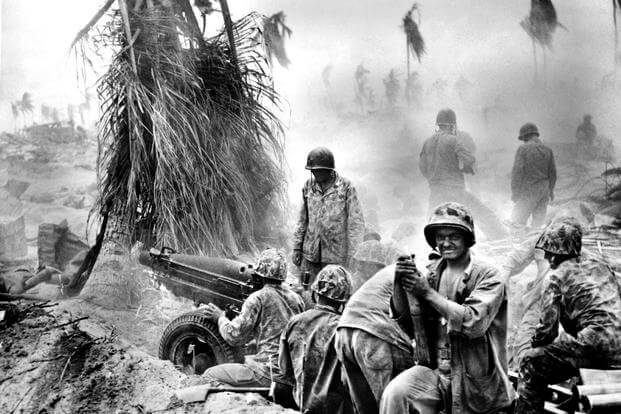
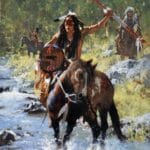
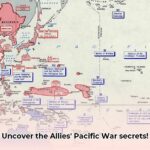
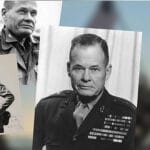

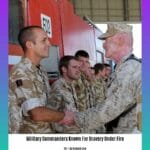
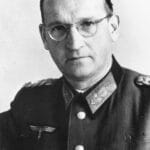










1 thought on “Island Hopping to Victory: The Untold Valor of WWII Marines in the Pacific”
Comments are closed.